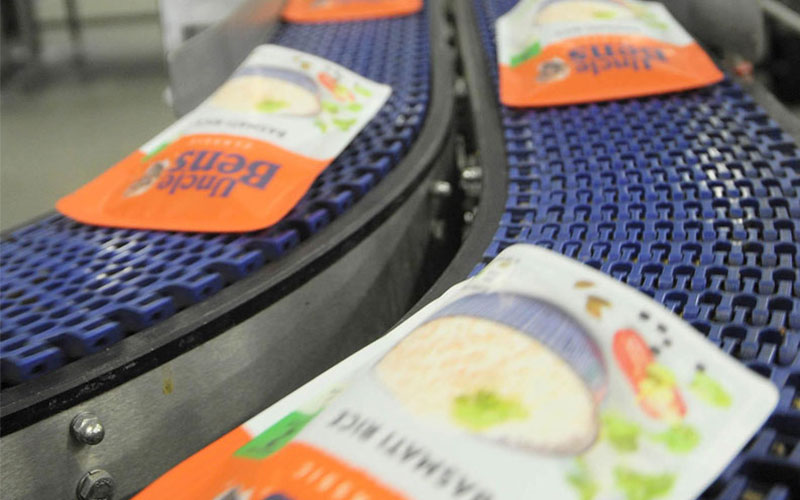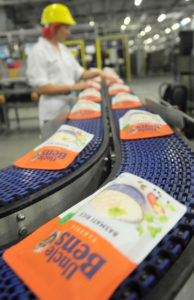
by Dianna Brodine, managing editor, PostPress
Consumer demand for reduced and recyclable packaging is receiving attention at the highest levels of corporate towers, with many of the world’s largest brands devoting entire websites to their sustainability initiatives. These brands are working actively to reduce their consumption of plastics and ensure ethical sourcing of paper products. Packaging design is scrutinized as brands try to reduce the amount of materials required, ensure those used can be recycled and still create a package that has consumer appeal on the retail shelf.
Yet, while everyone in the packaging supply chain is working to understand what materials are recyclable and then retooling existing package designs to comply with those standards, many communities around the globe – and here at home in the US – do not have the ability to effectively recycle their waste. In fact, the US Environmental Protection Agency acknowledges, “America’s recycling infrastructure has not kept pace with today’s waste stream.” However, the pressure of public perception is on the brand owner (and subsequently, those creating the packaging) – for now, the recycling community is off the hook.
To address consumer concerns, PepsiCo, Mars Wrigley and Estée Lauder have addressed sustainability initiatives on their websites. In this article, some of their efforts are summarized – because when the largest companies set their priorities, it is important to pay attention to what will trickle down to smaller members of the print and packaging supply chain.
PepsiCo
“Packaging plays an essential role in safely delivering our products to customers and consumers,” according to the drink and snack company’s sustainability practices website. “As a business, we design our packaging materials around several critical criteria, including compliance with food safety regulations, freshness and quality of the product, environmental sustainability, affordability, and consumer preferences, including convenience. At the beginning of every packaging design effort, we balance these criteria to arrive at a final packaging design.”
Pepsi’s goals include designing 100% of its packaging to be recyclable, compostable or biodegradable; reducing virgin plastic use; and using 25% recycled content in its plastic packaging. The company’s 2018 data indicated that 89% of its packaging globally was fully recyclable.
Pepsi has placed an emphasis on reducing the plastic used in its packaging, although the bottles it uses for its beverages would seem to slow that effort. In 2018, according to the company, “plastic represented just under half of the total packaging material PepsiCo used, with aluminum, glass and fiber making up most of the balance.” However, the company also tries to ensure its paper-based packaging is “responsibly sourced” and “will not knowingly accept from its supply chain paper-based packaging that may contain wood fiber harvested illegally or sourced from protected forest areas.”
Base material, such as plastics and wood fiber, aren’t the only materials being scrutinized by PepsiCo. In designing its packaging, the company is reviewing all elements – including those that add shelf appeal. The company explained, “While much of our beverage packaging is recyclable, we recognize that there are components of our packaging that may inhibit recyclability. To address this, we are currently integrating design for recyclability into our ideation and design process for all new products through a business-wide program. Some impediments such as non-recyclable labels, colorants and PVC have already been phased out in some markets.”
Mars Wrigley

sustainability concerns.
From candy to pet food, Mars Wrigley has a variety of point-of-purchase products that rely on packaging appeal. Perhaps that’s one reason its work in sustainable material use lags behind that of PepsiCo. “Today, 19% of our plastic packaging is recyclable in practice and at scale,” its website acknowledged. “Even more is technically recyclable where infrastructure exists. While it’s a start, we clearly have more work to do.”
This work is taking the shape of packaging redesigns that focus on recycling and reuse. Mars Wrigley has committed to a 25% reduction in its use of virgin plastics by 2025 and aims for 100% of its plastics packaging to be reusable, recyclable or compostable. The reduction in plastic use will be the result of a shift to more paper packaging. According to the company, “This paper-based packaging will be 100% sourced from certified, verified or recycled sources by 2020.”
The company acknowledged that this is an immense effort that will have a business-wide impact. “We’re proud of our products, but deeply concerned about the impact of packaging waste on land and in the ocean…Too much of it ends up in the environment. This is unacceptable and we are committed to addressing this, even if it means redesigning much of our packaging or our business models.”
Mars Wrigley’s message to consumers on its website conveys the rock-and-a-hard-place problem in sustainability conversations. Consumers rely on packaging to protect the product, preserve freshness, provide nutritional information – and even, as the company explained, “differentiate our brands.” Brand owners like Mars are attempting a delicate balance between satisfying consumer demand for sustainable practices while also appealing to consumers at the moment of purchase.
Estée Lauder
As one of the world’s premiere beauty brands, Estée Lauder understands that balance – and is unapologetic about the importance of an appealing and well-designed package to its consumer’s experience. “The design and aesthetic of our packaging must reflect the prestige of our products,” according to the company’s website.
Because packaging is such an integral part of its cosmetic line, Estee Lauder “maintains a top-quality package development operation that launches thousands of packages a year for its skin care, makeup, fragrance and hair care products.” The company’s package designers and engineers have access to an online training program through the Sustainable Packaging Coalition, which “help our teams make more strategically sustainable choices and achieve ELC’s sustainable packaging commitments.”
Currently, 39% of Estee Lauder’s product packaging is created from post-consumer recycled content or renewable materials.
Much of its packaging is enhanced with print decoration that includes foils, embossing and intricate diecuts – and those elements are not going away. “For many consumers, packaging is the first introduction to our products,” the site explained. “As with everything we do, we maintain a high aesthetic for the design and usability of our packaging, which must conform to our brand standards and meet the expectations of our consumers. We believe that packaging can meet these needs responsibly.”
Conclusion
Although brand owners are investing in sustainability efforts, consumers also bear a responsibility. No matter how recyclable a package is, it’s materials can’t reach the recycling facility without consumer intervention – which could be as simple as placing a cardboard shipping box into the recycling bin. In addition, communities must ensure the recycling infrastructure is in place. Each of the companies mentioned in this article address this conundrum.
According to the Mars Wrigley sustainability plan, “Even when a package is designed to be recyclable, reusable or compostable, it won’t be without the right consumer behaviors, collection, sorting systems and infrastructure. Today, valuable materials are being thrown away every day in every market where we operate around the world. To advance a future where packaging never becomes waste, we need the recycling and regulatory environment to evolve in significant ways.”

